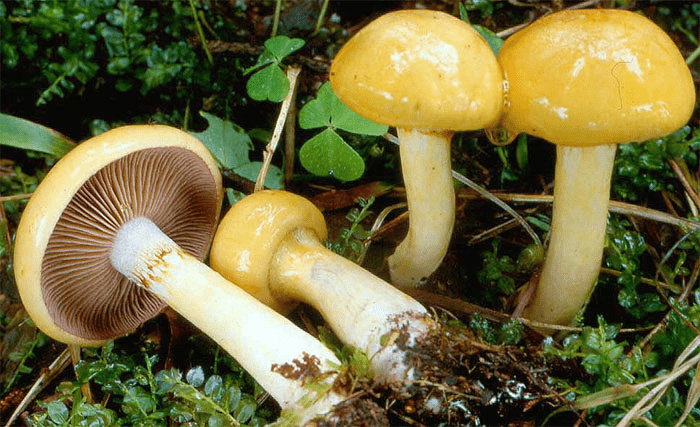Spread cobweb (Cortinarius delibutus)
- Vaega: Basidiomycota (Basidiomycetes)
- Vaevaega: Agaricomycotina (Agaricomycetes)
- Vasega: Agaricomycetes (Agaricomycetes)
- Vasega laiti: Agaricomycetidae (Agaricomycetes)
- Poloaiga: Agaricales (Agaric poʻo Lamellar)
- Aiga: Cortinariaceae (Spiderwebs)
- Ituaiga: Cortinarius (Spiderweb)
- ituaiga: Cortinarius delibutus (Smeared Cobweb)
Cobweb oiled
 faamatalaga:
faamatalaga:
The cap is 3-6 (9) cm in diameter, at first hemispherical or convex with a curled edge, then convex-prostrate with a curled or lowered edge, slimy, bright yellow, ocher yellow, with a darker, honey-yellow middle.
Plates of medium frequency, accreted or accreted by a tooth, first bluish-lilac, then pale ocher and brownish. The cobweb cover is whitish, weak, disappearing.
O le pauta o le spore e enaena enaena.
Leg 5-10 cm long and 0,5-1 cm in diameter, sometimes thin, long, curved, sometimes even of medium thickness, more often expanded, thickened at the base, mucous, first made, then hollow, monochromatic with plates at the top, bluish-lilac , whitish, below yellowish with a faint yellow, sometimes reddish fibrous band.
The pulp is medium fleshy, yellowish or whitish, without much odor.
Faʻasalalau:
It grows from mid-August to the end of September in coniferous, often mixed (with oak, spruce) forests, in grass, in small groups and singly, not often, annually.
Iloiloga:
Conditionally edible mushroom, used fresh (boil for about 15 minutes, pour out the broth) in second courses.









